
This series began as an editor's whim to offer wonderful content under the theme of "10 people, 10 colors," coinciding with Web Dentsu Inc.'s 10th anniversary in 2023. While the "10" connection is central, if we're going big, it becomes a series themed around "diversity."
When we want to immerse ourselves in thought or try to squeeze out ideas, we need our own indispensable "companions" – items we simply can't do without. For the great detective Sherlock Holmes, these would be his beloved "pipe" and "violin."
This series invites various individuals to share their own "personal companions for thought." We hope you'll enjoy discovering their unexpected sides while pondering "thoughts about thinking."
(Web Dentsu Inc. News Editorial Department)
Guest for the 10th installment: Mr. Masahiro Makiguchi, Director of Ad Museum Tokyo
──This series has now reached its 10th installment. Since we titled it "Ten People, Ten Colors," I was worried it would be a "failed project" if we didn't feature at least ten people. As an editor, I'm relieved to have made it this far. Mr. Makiguchi, thank you for joining us today.
Makiguchi: Nice to meet you.
──To start, where are you currently based, and what do you do?
Makiguchi: I've worked in marketing, creative, corporate planning, communications, PR, and other fields. Currently, I serve as Director of Ad Museum Tokyo.
──Director of Ad Museum Tokyo? That's surprising. We featured your proposed series—or rather, what could be called a major series spanning nearly two years—in " The Future of Corporate Museums as PR Assets."
Makiguchi: It even became a book (" Welcome to the Corporate Museum (Vol. 1/Vol. 2) " published by Jiji Press)... Thinking about it now, it's a strange connection, isn't it?
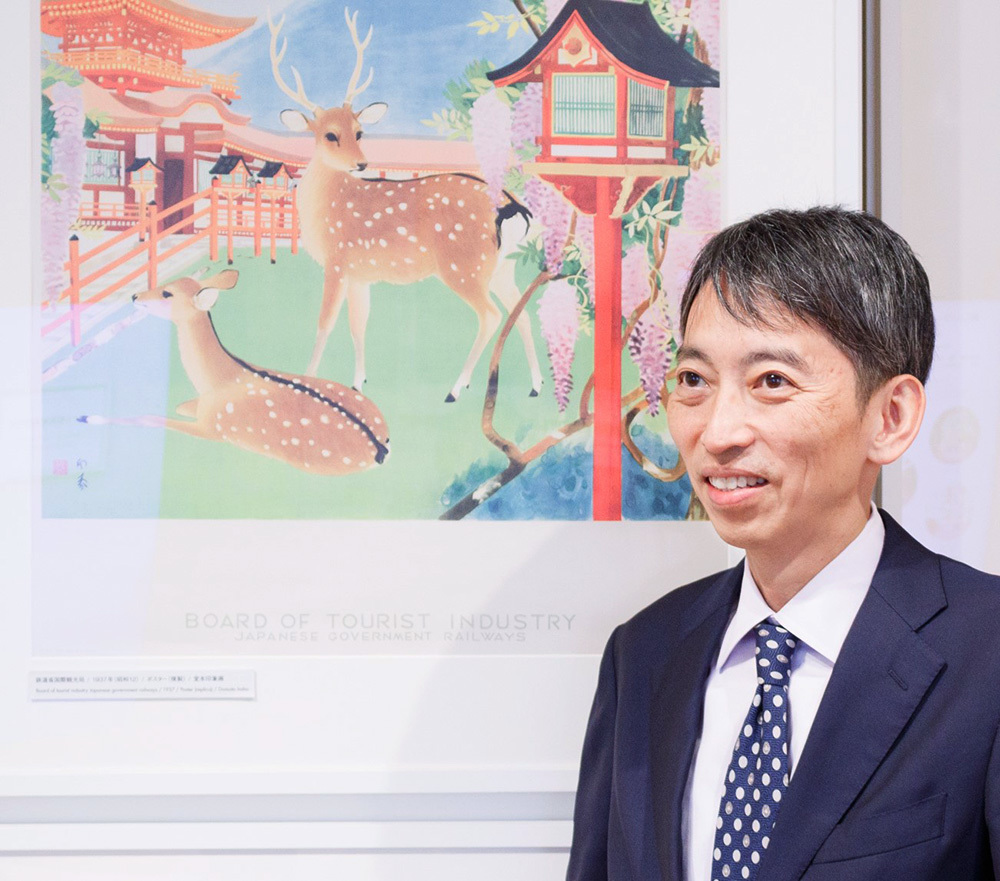
Masahiro Makiguchi:
Advisor, Yoshida Hideo Memorial Foundation; Director, Ad Museum Tokyo
Graduated from the University of Tokyo Faculty of Law in 1990 and joined Dentsu Inc. Assigned to the Marketing Bureau, he subsequently served as Director of the IMC Planning Center, Director of the 1CR Planning Bureau, Director of the Corporate Planning Bureau, Director of Corporate Communications, and Director of Public Relations. In January 2020, he became Managing Executive Officer of PR Consulting Dentsu Inc. In March of the same year, he was appointed President and Representative Director of PR Consulting Dentsu Inc. In 2021, selected as one of the Asia Pacific Innovators 25 by PRovoke Media. In 2022, appointed Chairman of the Board of the Japan Public Relations Association (Public Interest Incorporated Association). Assumed current position in April 2024. His publications include "Advertising Elementary School: Learn to Communicate Through CM Creation" (Sendenkaigi) and "Why Do You All Start Talking About the Same Things When It Comes to Job Hunting?" (Sendenkaigi). His translations include "Account Planning Changes Advertising" (Diamond Inc.) and "Participatory Ownership Management" (Diamond Inc.).
──Given your career, Mr. Makiguchi, this appointment feels like it was meant to be.
Makiguchi: I was deeply involved in the conceptual work during the 2017 renewal. If another renewal happens in the next 5 to 10 years, I'll get to witness the rebirth of the world's only Ad Museum twice. It's a precious experience, and the responsibility is heavy. After all, this museum still has plenty of room to grow.
──Room to grow, you say. That's a wonderfully affectionate way of putting it, very much like you.
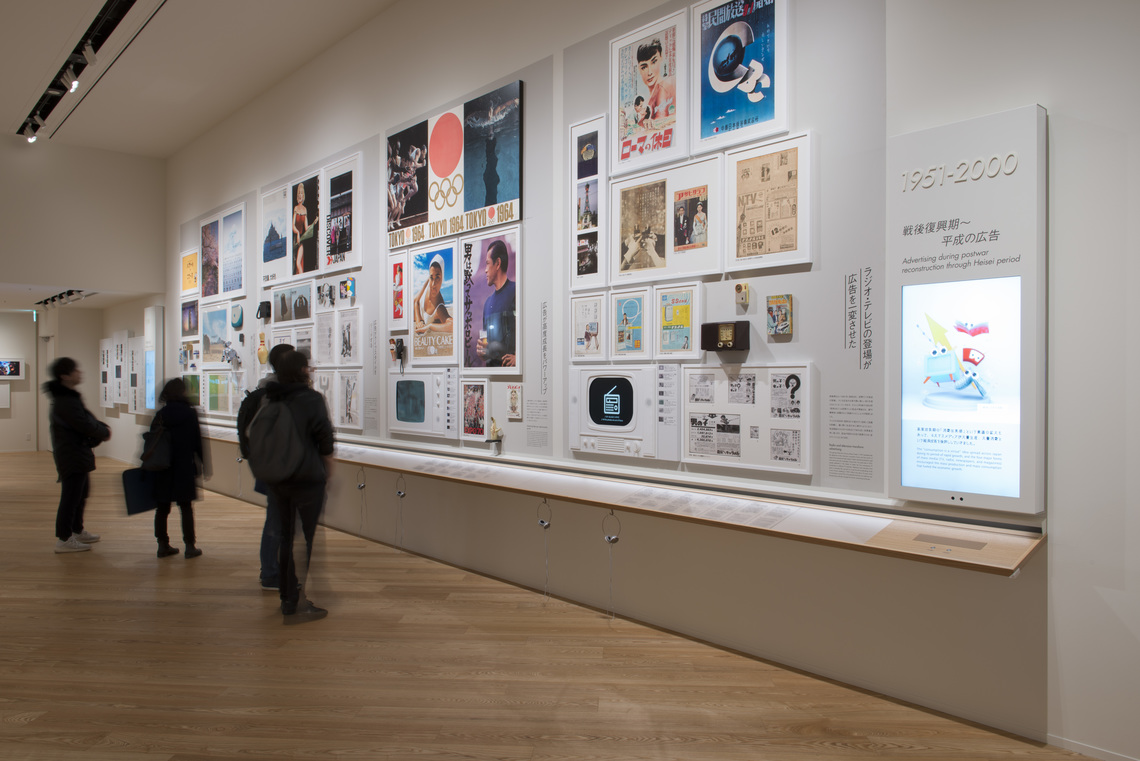
The concept Mr. Makiguchi spearheaded for the 2017 renewal was "Into Creativity." He envisioned visitors venturing into a creative world like a forest. (Photo courtesy: Ad Museum Tokyo)
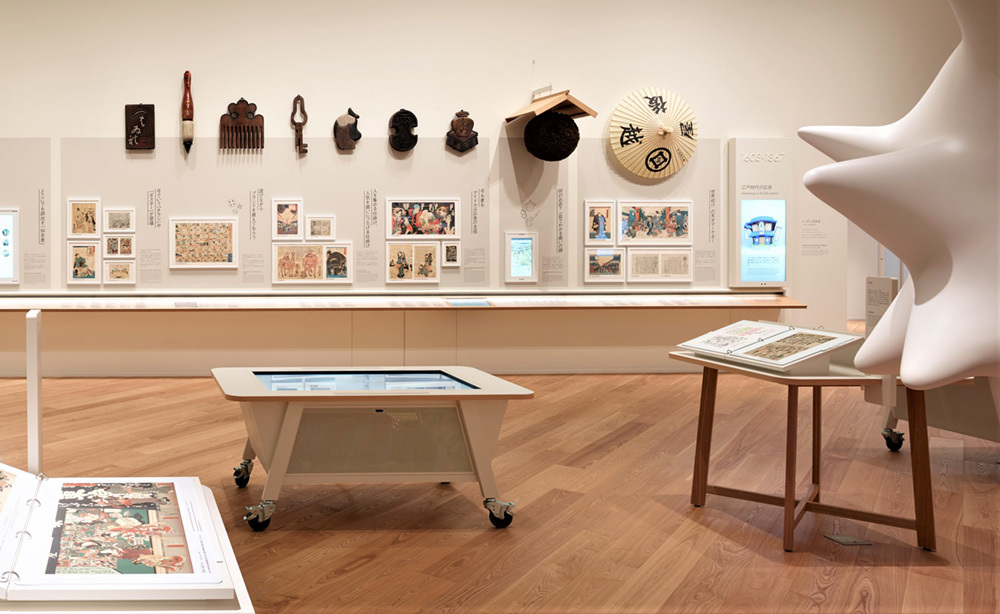
Only a fraction of the works are displayed in the museum. Including those stored in the collection, the total exceeds approximately 330,000 pieces. You can delve deeper into information about pieces that catch your interest. Beyond venturing into the creative forest, your own unique discoveries await. (Photo courtesy: Ad Museum Tokyo)
The value lies in "slow thinking." (Masahiro Makiguchi)
──Speaking of Mr. Makiguchi, I vividly remember his presentation during his time as Creative Bureau Director at a bureau meeting: "Is a Literature Department Necessary at (National) Universities?" The very choice of speech topic was quintessentially Makiguchi. And the way he energized the room with that theme? That was so, so Makiguchi. I don't actually recall whether the conclusion was that literature departments are necessary or unnecessary (laughs).
Makiguchi: Of course, the conclusion is "necessary." After all, humans are beings who think through words, who exhaust their thoughts with words. I sincerely hope for a society that values the culture and education woven from words.
──The phrasing "I hope it will be a society that values..." rather than "I want to value..." is also so typical of you, Mr. Makiguchi. I can't help but keep saying "so typical," but your way of thinking is truly unique, isn't it? That's precisely why I asked for this interview.
Makiguchi: I think this connects to the idea of "companionship in thought." What I seek is "slow thinking."
──Slow thinking? As in "slow" as in "slow" versus "fast"? What exactly does that mean...?
Makiguchi: "Fast thinking" is the kind of thinking we're constantly demanded, pressured, and conditioned to adopt in the business world. If you take things too leisurely, you won't achieve results. Speed and efficiency are what's demanded above all.
──Like making instant judgments, eliminating waste, and acting immediately.
Makiguchi: Exactly. That's certainly important. But if we only engage in "fast thinking," might we risk falling into shallow thinking? I also think "fast thinking" connects to fragmenting time. Is stacking up fragmented time, or processing time in small chunks, truly a rich way of living?
──I was actually planning to ask you today, Makiguchi-san, "What is rich thinking?" but you beat me to it.
Makiguchi: I believe deep thinking requires redundancy. That leads to richness.
──Redundancy and richness, you mean? Um, redundancy as in "redundant talk," and richness as in abundance?
Makiguchi: Exactly. "Redundancy" is often used as a negative term, as you mentioned, right? But there is such a thing as good redundancy. For example, Dostoevsky's novels are prime examples of redundancy. Things like Kabuki or opera take four or five hours to tell a story that could be finished in 10 to 15 minutes. It's truly the "ultimate in redundancy." Yet, at the same time, that time can also be called the "ultimate in richness."
──I see. I'm starting to grasp this concept of "slow thinking." And how crucial it is.
Makiguchi: I call the ultimate state of slow thinking "non-thinking." It's a state of not thinking. Humans, precisely because we have brains, end up thinking about things constantly. This causes noise and mental debris to accumulate. Unless you clear that out, you can't think about anything new.
──I get it, I really do.
Makiguchi: "Grand vistas" also guide people toward "non-thinking." Take Mount Fuji or Lake Kussharo, for example. By "grand," I mean something that has existed since ancient times, whether humans are there or not, and will continue to exist forever. The time flowing there is incredibly slow, right? When you immerse yourself in that kind of time, everything becomes trivial, or rather, the dust and debris accumulated in your mind gets cleared away, leaving you refreshed.
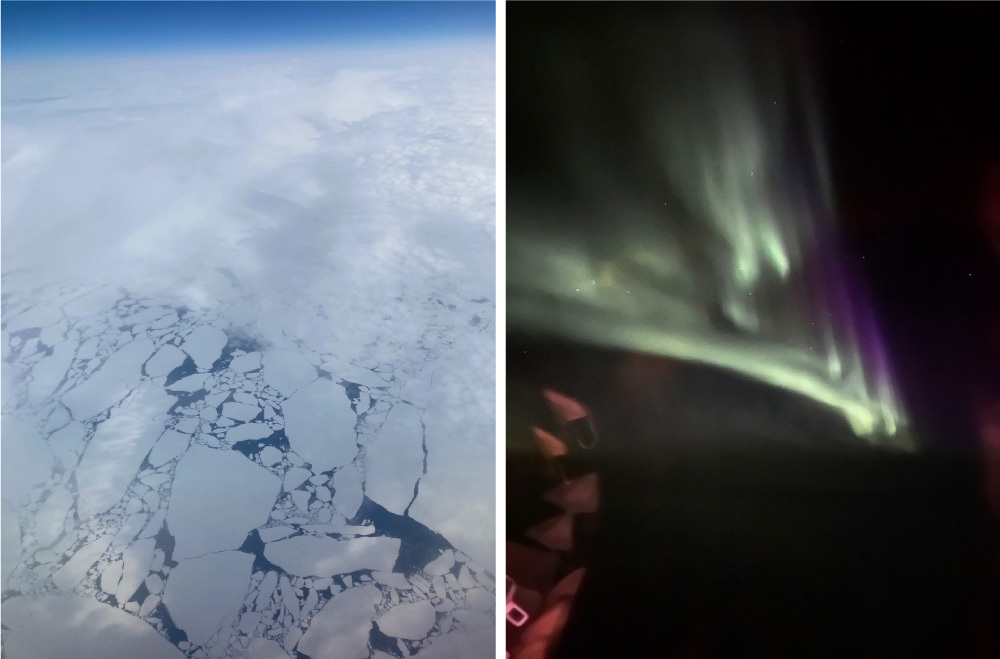
The Arctic Ocean and aurora seen from an airplane in flight (Photo: Masahiro Makiguchi). When someone says, "This is what a world without thought is like," you can imagine that sensation—where trivial matters vanish from your mind.
──I understand being overwhelmed by "grand scenery," but I imagine only someone like you, Mr. Makiguchi, would look at it and start pondering "slow thinking." Still, I understand exactly what you mean.
Makiguchi: I don't really want to share this, but there's this view of the Five Peaks of Aso from Minamiaso—it's just, just the best.

The Five Peaks of Aso (Photo: Masahiro Makiguchi)
What is Makiguchi Masahiro's "companion for thought"?
──Now, let's get to the main topic. Could you tell us about your specific "companion for thought"?
Makiguchi: Straight up, it's the "Rosco Room."
──The Rothko Room? Please tell us more about it.
Makiguchi: It's a painting exhibition room built inside the DIC Kawamura Memorial Museum of Art in Sakura City, Chiba Prefecture. It's a space that could be described as the ultimate in luxury, filled entirely with seven large abstract paintings by the American artist Mark Rothko. The DIC Kawamura Memorial Museum of Art itself is my favorite museum in the world. I think it was more than ten years ago when I visited it for the first time, and I was blown away by the magnificence of its collection. Rembrandt, Renoir, Picasso, Chagall, Fujita... It's wonderful to be able to appreciate so many famous paintings right in front of your eyes, just a few centimeters away. Since then, I've been visiting every year without fail.
──We haven't quite gotten to the Rothko Room yet.

Exterior of the DIC Kawamura Memorial Museum of Art (Photo courtesy of DIC Corporation)
Makiguchi: I'll share my screen now to show you the "Roscoe Room." This is it (Editor's note: The exhibition room as seen on the remote screen during the interview). Can you see it? This is what I'm talking about...
──Wow. Even from just one photo, you can imagine that fantastical space.
Makiguchi: You really should go see it. Like the Aso Five Peaks, I didn't want to tell anyone about it, but unfortunately, this museum will close at the end of January next year (*). So lately, I've been telling everyone I meet to visit while they still can.
※As of the interview date (September 24). Subsequently, on September 30, DIC announced that the closure date has been postponed to late March 2025. They stated this is "to allow more visitors to come before the closure, considering the current visitor situation." The DIC Kawamura Memorial Museum of Art website is here.
──Knowing that, I just can't sit still.
Makiguchi: Right? Now, about the brilliance of the "Roscoe Room," composed solely of seven abstract paintings... When you enter that dimly lit, heptagonal room, well...
──Wait, wait a minute! I almost missed that. So it's a heptagonal room specifically designed to display seven paintings? A 360-degree immersion in Rothko. You could say it's like a "Rothko mural" instead of a Lascaux cave painting (laughs).
Makiguchi: Exactly. I think it's a globally rare space. Within that space, there's only the relationship between "the seven paintings" and "yourself experiencing them." Of course, you won't get any rude reminders like "Please keep moving forward!" And what's more, as you step into the dim room, your vision shifts momentarily. As your eyes adjust to the darkness, each painting begins to reveal a completely different expression.
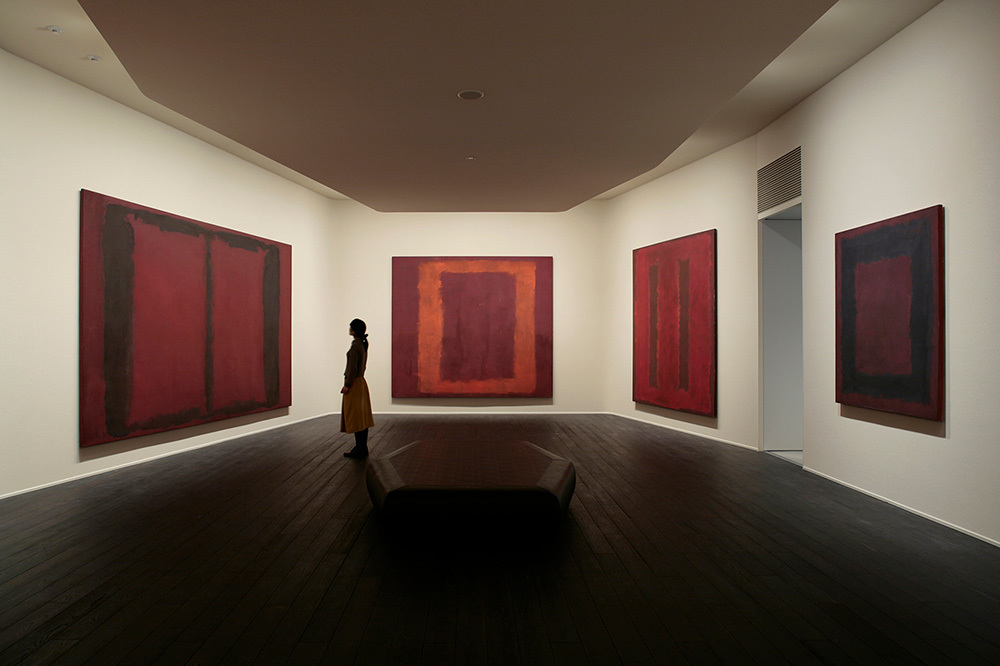
The "Roscoe Room" as shown by Mr. Makiguchi (Photo courtesy of DIC Corporation)
—That's dark adaptation, right? Learned about it when getting my driver's license... Wow, it's all so meticulously calculated!
Makiguchi: Beyond the entrance to the "Rothko Room" lies a world that truly embodies the "ultimate in non-thinking." The distracting noise disappears, revealing the true form of what should be there. By abandoning thought, by choosing the path of not thinking, you become capable of higher-quality thinking.
──Well then, you'd expect people to say, "If non-thinking is that wonderful, show me the shortest route there!" Right? Why bother going all the way to Sakura City...
Makiguchi: I wouldn't want to associate with such people. Enjoying the time it takes to reach non-thinking is also part of the "richness" I pursue. You can't just efficiently skip over that and demand only the result...
──Boring, you say?
Makiguchi: More than boring, it's a waste. In many ways.
──Ha ha ha, you're as harsh as ever. Thank you for sharing such a quintessentially Makiguchi perspective right to the very end. It was a lot of fun.
Makiguchi: The pleasure was all mine. It was a most delightful time.















